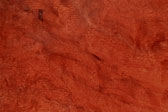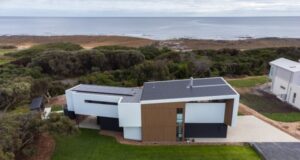
Red Gum refers to a number of Australian species (most commonly River Red Gum). Red gum offers beautiful hues and graining, and is rot and termite resistant but may degrade with humidity changes.

Image courtesy of WoodSolutions.
What is Red Gum?
Red Gum is a term used to refer to a number of different species, but the main species used for decking and pergolas is the River Red Gum. Red Gum is native to Australia and found all across the country, but Red Gums also make for good plantation timber due to their tendency for straight growth. As a result, plantations are found in appropriate climates across the world.
What does Red Gum look like?
Red Gum derives its name from its wood, the colour of which can range from a light salmon pink to an almost red-black shade. The timber itself can often contain many natural features in its grain such as cross graining and grub holes which can be visually appealing, but may also weaken the board in the long term. Red Gum can also be brittle and prone to splitting if it’s not installed with care.
Red Gum can react badly under humid conditions if it’s not sealed well, but it is rot and termite resistant.
- Attractive graining and natural features blend this wood well with Australian yards.
- Striking colour range, vivid reds across the spectrum.
- Long lasting and durable, a native hardwood.
What is Red Gum used for?
Red Gum is a versatile wood and can be used in decks and pergolas for just about everything from stumps to balustrades to decking. The wood is difficult to carve so ornamentation is difficult, but the main selling point of red gum is its beautiful colouration so this is not typically an issue.
|
Advantages
|
Disadvantages
|





